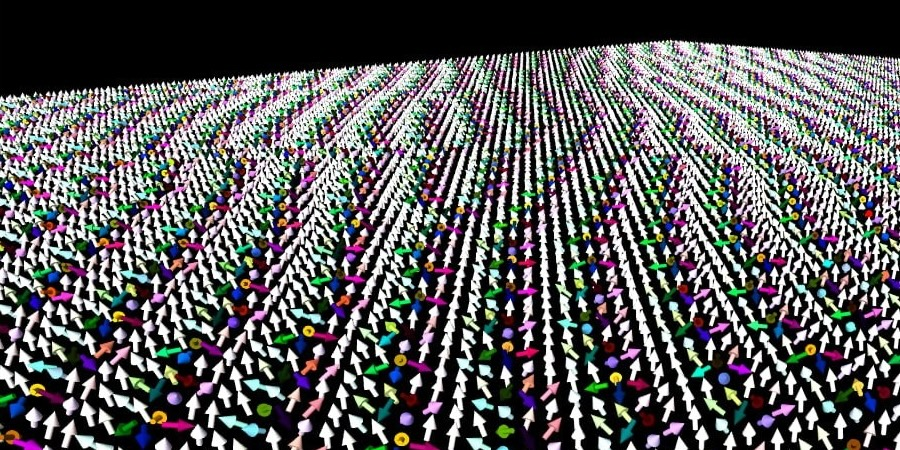Speaker
Description
The quest for predicting optimally stable and compact isolated magnetic skyrmions suitable for information technology applications relies on solving the micromagnetic equation. Numerical techniques have been successfully applied to find these solutions. The fundamental nature of these topological defects makes the development of skyrmion theory a very exciting topic from the point of view of both physics and mathematics. In the past few years we have successfully used the tools of calculus of variations to develop an analytical skyrmion theory that enables a systematical prediction of skyrmions characteristics. This theory exploits the fundamental properties of the exchange energy which posses exact solutions called Belavin-Polyakov solutions [1]. Using a modified Belavin-Polyakov solution we carry out an asymptotic analysis study and obtain explicit analytical expressions for the skyrmion size, rotation angle and energy, valid in the ultrathin film limit in the regime when the exchange energy dominates. This includes results on, the role of long range dipolar interaction in the stabilization of compact skyrmions as a function of the film effective thickness [2-3], the stability of skyrmions under a magnetic field applied parallel to their core [4] and the derivation of an explicit Arrhenius law for skyrmion lifetime [5]. Finally we will present our latest work where we extended our model to multilayers [6]. We show that in addition to the usual local shape anisotropy term and the non-local dipolar interaction term, that are already present in the case of single ultrathin ferromagnetic layers, the expansion of the stray field energy for multilayers leads to the appearance of a new local dipolar energy term corresponding to interlayer volume-surface interactions. This term cancels out in the case of identical magnetizations in the adjacent layers, but becomes equivalent to a stabilizing layer-dependent interfacial DMI when the in-plane magnetization components in two consecutive layers are opposite to one another.
[1] A. Belavin and A. Polyakov JETP Lett. 22 245 (1975)
[2] A. Bernand-Mantel, C. Muratov and T. Simon PRB 101 045416 (2020)
[3] A. Bernand-Mantel, C. Muratov and T. Simon ARMA 239 219 (2021)
[4] A. Bernand-Mantel, C. Muratov and T. Simon PRB 108 L161405 (2023)
[5] A. Bernand-Mantel, C. Muratov and V. Slastikov PNAS 119 e2122237119 (2022)
[6] N. Dubicki, V. Slastikov, A. Bernand-Mantel, C. Muratov arXiv:2505.14649 (2025)

